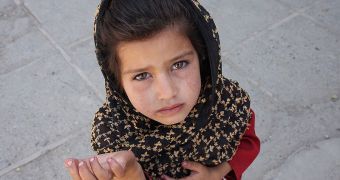We might think the effects of climate change are equally felt by both genders. A new study issued by the United Nations proves us wrong, showing that women are much more exposed to risks correlated with this phenomenon.
A recent study issued by the United Nations Environment Programme (UNEP) highlights that the lifestyle and wellbeing of women is put in greater danger by climate change, associated with a high rate of human trafficking, Population Matters reports.
This information shouldn't come as a surprise since nowadays women are responsible for agricultural practices in developing countries, that will suffer the consequences of extreme weather conditions, drought and floods.
"Women often play a stronger role than men in the management of ecosystem services and food security. Hence, sustainable adaptation must focus on gender and the role of women if it is to become successful", declared UN Under-Secretary General and UNEP Executive Director, Achim Steiner.
The reports, entitled Women at the Frontline of Climate Change: Gender Risks and Hopes and released during the Durban summit reveals the best way to overcome this increased risk is to back much-needed green technologies, preserve water and other natural resources and invest in alternative sources of energy that can offset climate change while improving the lives of women.
The same study reveals that women are more likely to die during natural calamities, because of limited access to education and strategies that would help them survive.
Moreover, the report mentions the harmful impact of cultural factors that considerably reduces the mobility of women from poor nations. It shouldn't come as a shock that climate change is also correlated with a high risk of human trafficking.
Experts have reached the conclusion that devastating phenomenon can increase the vulnerability of women from developing countries, making them more exposed to exterior threats. Climate-related disasters can leave turn them into perfect victims of slave traffickers.
The reports clearly indicates that trafficking rates go through the roof during natural disasters, growing by up to 30%.

 14 DAY TRIAL //
14 DAY TRIAL //